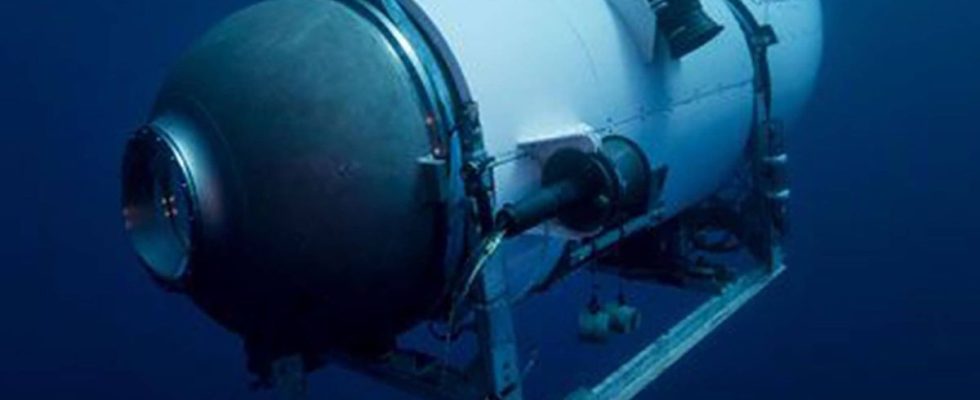Published on
Updated
Reading 4 mins.
in collaboration with
Dr Gérald Kierzek (Medical Director)
Medical validation:
June 23, 2023
Not found since Sunday morning, the private submarine Titan would have finally suffered a “catastrophic implosion” according to the last press conference of the Coast Guard. Doubts will inevitably resurface concerning the safety of this tourist submarine.
Update June 22: According to the US Coast Guard, the wreckage found on Thursday did indeed belong to the submarine Titan. This debris shows, according to the Coast Guard, that the craft probably suffered a “catastrophic implosion”. The 5 passengers therefore died. Suspicions about possible negligence related to the safety of the OceanGate company’s tourist submarine had emerged since the beginning of the week.
What happened to the submarine Titan submerged last Sunday in an attempt to get closer to the famous wreck of the Titanic? Four days after the loss of contact, the concern is great for the families of the 5 passengers who made up the crew for the day, and the chances of finding the boat are slim to date according to the latest information. In the event of an emergency, the submarine only had a reserve of 96 hours of oxygen at most. A reserve that would expire today, if it was triggered.
The Titan sightseeing submarine, which had set off to visit the wreck of the Titanic, was submerged at 8 a.m. on Sunday June 18, about 700 km southeast of St John’s, Newfoundland. But 1 hour 45 minutes into the dive, Titan lost contact with its mothership. With no sign of the craft yet, the five Titanic tourists – including a British billionaire, a French maritime surveyor, a British businessman who founded OceanGate, and one of Pakistan’s richest men and her son – face several threats… if they are still alive.
Teams and robots are currently looking for them, but the scope to explore is immense, especially since the experts cannot know if the machine is currently at the bottom of the ocean at more than 3,000 meters deep. , or on the surface. But even in this case, the submarine is itself closed by 17 external nuts which would not allow any exit from the interior.
Pressure, the first deadly threat
When a device is submerged so deeply, the first threat that comes to mind is a rupture of the pressure vessel. Dr. Gérald Kierzek, medical director of Doctissimo, explains it to us: “If there is the slightest crack in the hull, there is no way it can withstand such depth and the passengers survive, because the barotraumatic pressure then goes far beyond the pressure that a To be human”.
This would result in a lack of oxygen, a pressure that presses and collapses the lungs, followed by neurological accidents for the passengers. “If that were the case, the people on board would have died instantly” also mentions Dr. Dale Molé, former director of underwater medicine and radiological health for the US Navy in the pages of the DailyMail. This concern is all the more well-founded since alerts were already mentioned in 2019 on the security of the Titan: in particular about its oversized porthole, designed to withstand the pressure felt at 1,300 meters deep, while OceanGate, the company builder, intended to dive it to 4,000 meters.
The rise in dioxide, another major risk
If there were no cracks in the hull, then the 5 passengers could have faced another major threat in their journey: “If it was a mechanical accident that caused the loss of the submarine without it being damaged, the other risk for the passengers is to quickly find themselves with too much carbon dioxide, but not enough oxygen” evokes Dr. Kierzek.
A scenario that is not more enviable: “This eventually creates suffocation and a progressive coma, generally accelerated by the state of panic which consumes more oxygen. In this case, the victims then lose consciousness by cerebral hypoxiae”. A hypothesis that is gaining momentum as the oxygen reserves are supposed to be empty this Thursday at 1 p.m. according to the calculations of the rescue teams.
There is also a risk of hypothermia
Finally, submerged for 4 days today, the Titan must be very cold, and the passengers would therefore risk fatal hypothermia. In the DailyMail, Dr. Molé continues his explanations: the electronic equipment on board is indeed supposed to generate heat, but with the hull in contact with the ocean which is 5 degrees at this depth, the cold could reach the cabin quickly. “At first the passengers would start shivering to try to generate heat which consumes more oxygen and then often some of the first things that are affected are judgement. They would then lose the ability to use their hands, and then gradually fall into unconsciousness.” did he declare.
Possible hyperbaric treatment?
In the slim possibility that the passengers would be fished out during the day, again, the specialists are not very optimistic. For Dr. Kierzek, there is indeed a hyperbaric treatment in the case of decompression sickness:
“Under a certain pressure, the gases expel the oxygen from the hemoglobin and the use of a hyperbaric chamber makes it possible to push the oxygen to regain its place in the hemoglobin molecules” explains the paramedic.
But the case seems both too advanced and too crazy to talk about recovery. “We talk about this treatment in diving accidents, not in those of submarines of which we cannot find the trace…” concludes our rather pessimistic expert.
